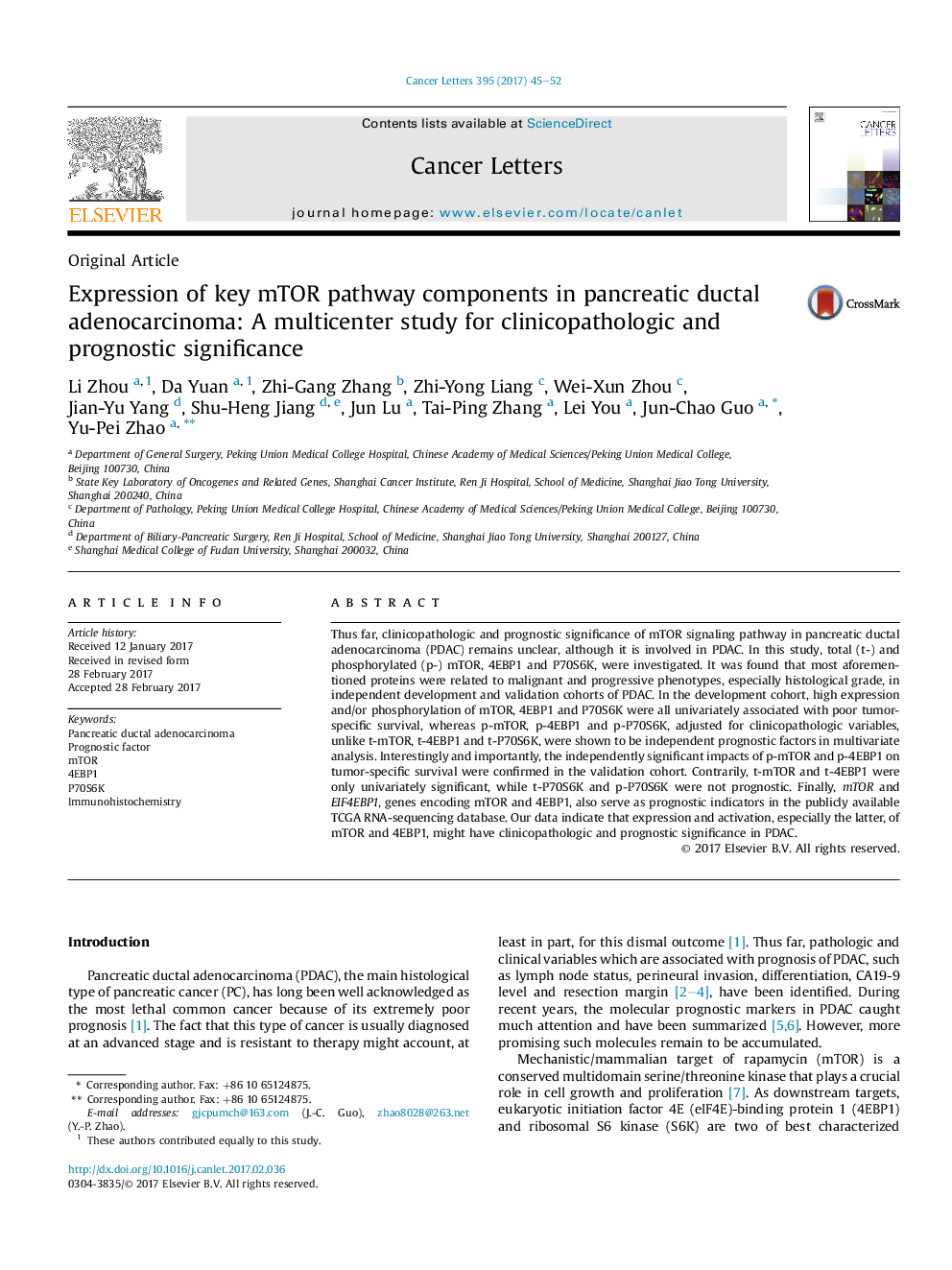| Article ID | Journal | Published Year | Pages | File Type |
|---|---|---|---|---|
| 5525627 | Cancer Letters | 2017 | 8 Pages |
â¢Expression of mTOR and 4EBP1 has univariate prognostic significance in two cohorts of pancreatic ductal adenocarcinoma.â¢Phosphorylation of mTOR and 4EBP1 are independent prognostic factors in two cohorts of pancreatic ductal adenocarcinoma.â¢mTOR and EIF4EBP1 are also prognostic in the TCGA database of pancreatic ductal adenocarcinoma.
Thus far, clinicopathologic and prognostic significance of mTOR signaling pathway in pancreatic ductal adenocarcinoma (PDAC) remains unclear, although it is involved in PDAC. In this study, total (t-) and phosphorylated (p-) mTOR, 4EBP1 and P70S6K, were investigated. It was found that most aforementioned proteins were related to malignant and progressive phenotypes, especially histological grade, in independent development and validation cohorts of PDAC. In the development cohort, high expression and/or phosphorylation of mTOR, 4EBP1 and P70S6K were all univariately associated with poor tumor-specific survival, whereas p-mTOR, p-4EBP1 and p-P70S6K, adjusted for clinicopathologic variables, unlike t-mTOR, t-4EBP1 and t-P70S6K, were shown to be independent prognostic factors in multivariate analysis. Interestingly and importantly, the independently significant impacts of p-mTOR and p-4EBP1 on tumor-specific survival were confirmed in the validation cohort. Contrarily, t-mTOR and t-4EBP1 were only univariately significant, while t-P70S6K and p-P70S6K were not prognostic. Finally, mTOR and EIF4EBP1, genes encoding mTOR and 4EBP1, also serve as prognostic indicators in the publicly available TCGA RNA-sequencing database. Our data indicate that expression and activation, especially the latter, of mTOR and 4EBP1, might have clinicopathologic and prognostic significance in PDAC.
